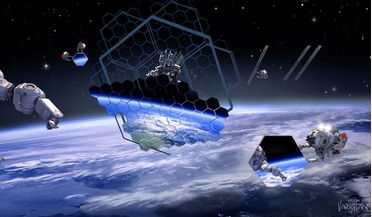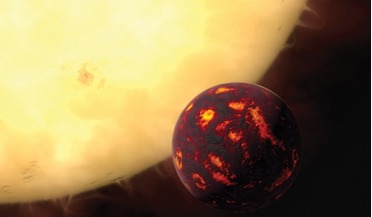 May 2024
The universe in acrylics - an artist’s passion
May 2024
The universe in acrylics - an artist’s passion
... by asteroids about 3.9 billion years ago. Although I usually draw my inspiration from images from the Hubble and James Webb space telescopes, during the Reinventing Space conference someone alerted me to imagery of Mars from the HiRISE camera - the...
 August 2017
On-orbit assembly will deliver major benefits in coming decade
August 2017
On-orbit assembly will deliver major benefits in coming decade
... decade. The search for exoplanets is one of the most exciting space science endeavours and though NASA’s James Webb telescope will cost about US$9 billion it may be too small to yield clear scientific conclusions on exoplanets. To deploy...
 May 2019
Unlocking the full potential of Earth observation
May 2019
Unlocking the full potential of Earth observation
... hardware available. In many ways, the technology on these satellites is just as impressive as the technology on the James Webb telescope. From an altitude of over 500 km, the cameras on today’s satellites are powerful enough to distinguish between...
 March 2017
Twinkle - a mission to unravel the story of planets in our galaxy
March 2017
Twinkle - a mission to unravel the story of planets in our galaxy
... performance of Spitzer, no data is currently available in the mid-infrared. The James Webb Telescope is due for launch in late 2018 and the European Extremely Large Telescope (E-ELT) will start operations in 2024. Both these facilities will have...
 March 2018
Mapping the dark universe
March 2018
Mapping the dark universe
...spacecraft is equipped with a 1.2 m three-mirror Korsch-type telescope and two instruments, a visible imager, VIS, and the ...around 3.5 times more than the estimate for NASA/ESA’s James Webb telescope. In terms of data volume and downlink rates Euclid ...
 03 August 2018
Plate tectonics not needed for life, but UV light is
03 August 2018
Plate tectonics not needed for life, but UV light is
... step. Presently, several planets detected by the Kepler telescope, including Kepler 452b, a planet that has been nicknamed... current technology, next-generation telescopes, such as NASA's TESS and James Webb Telescopes, will hopefully find many more...